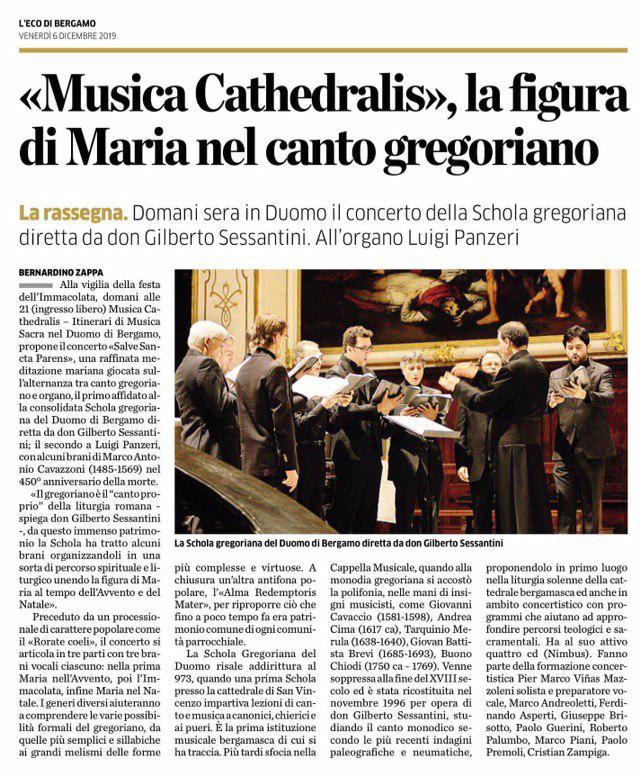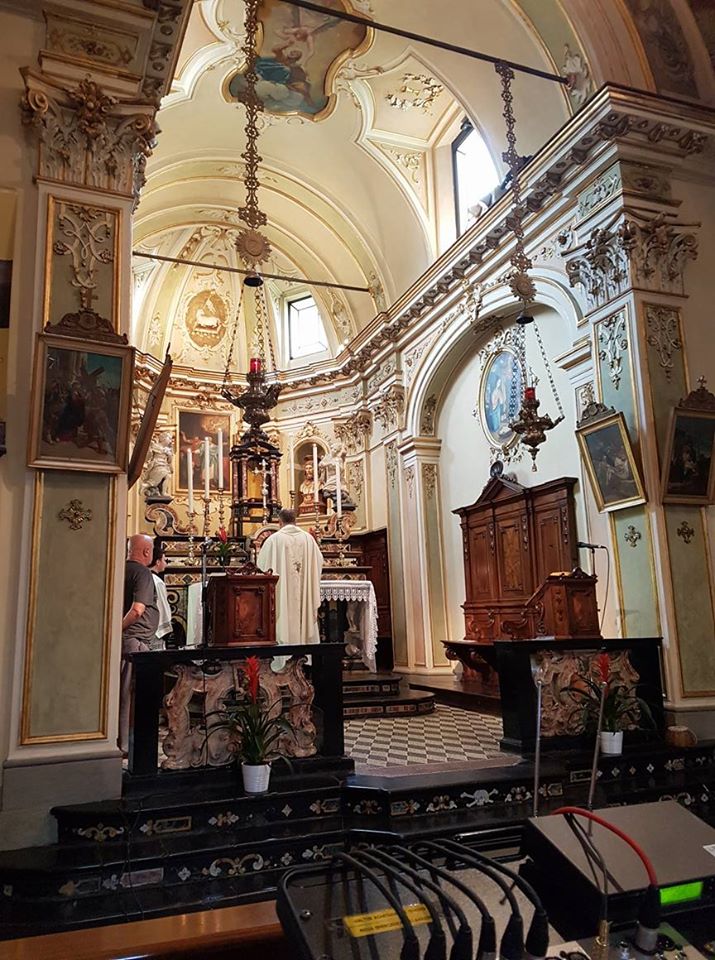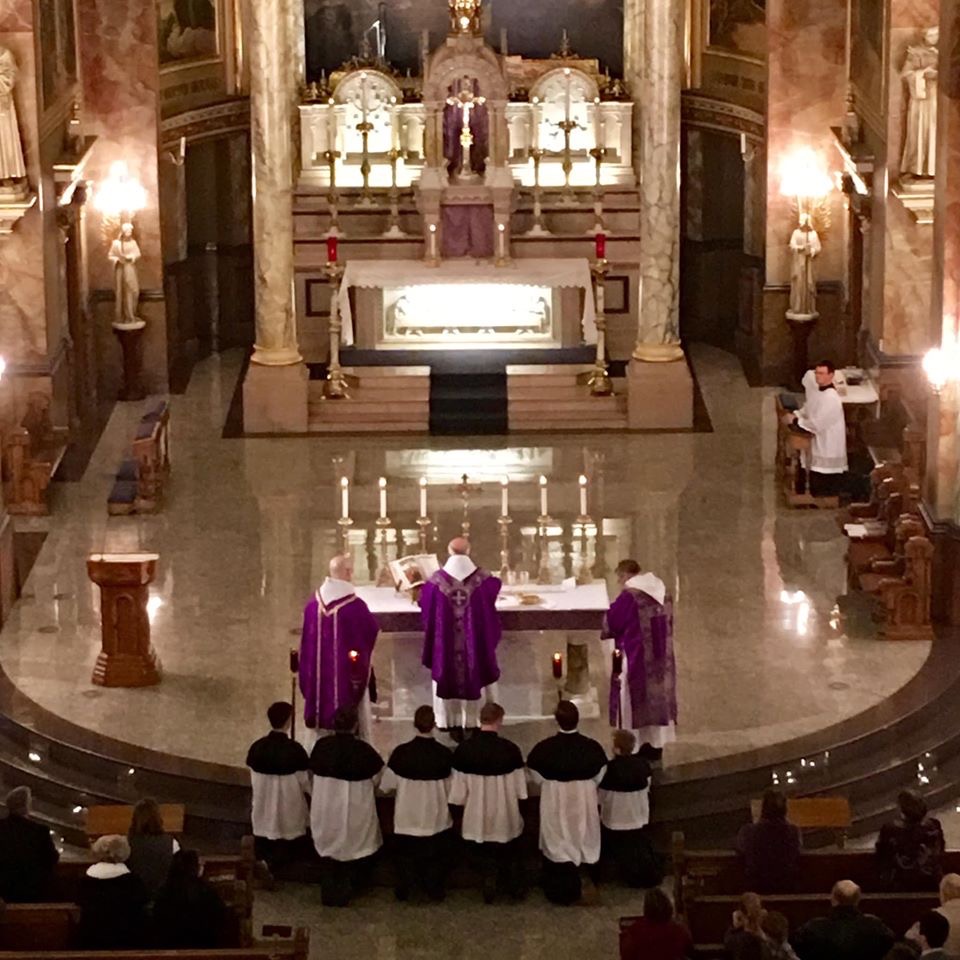Bollettino informativo del centro di Canto Gregoriano e monodie «Dom Jean Claire» – Verona n° 3 – Settembre – Dicembre 2019:
Per info: gregorianavox@gmail.com
Auxilia ad Missam in forma ordinaria celebrandam secundum Œcumenicum Concilium Vaticanum II
Bollettino informativo del centro di Canto Gregoriano e monodie «Dom Jean Claire» – Verona n° 3 – Settembre – Dicembre 2019:
Per info: gregorianavox@gmail.com

Nel Santuario (antica chiesa parrocchiale) di san Matteo a Villa d’Ogna (BG) le s. Messe feriali delle 8:00 (e anche quelle festive delle 8:00 e delle 10:30, da Novembre a Pasqua) vengono celebrate ad orientem.

Many of those, especially young adults, who frequent the extraordinary form of the Roman Rite, celebrated according to the 1962 ritual that stretches back to the Council of Trent, do so, in my opinion, not because they have major issues with the Novus Ordo — per se — but because they prefer the general liturgical fidelity and reverence of priests who celebrate the extraordinary form, the conspicuous focus on God, the sacred music, the way Holy Communion is received, the promotion of priestly vocations through the training of altar boys, and several other things still possible, but far less common, in the celebration of the Novus Ordo.
To celebrate the Novus Ordo “as it ought to be” means ensuring always and everywhere that the liturgy conveys a profound sense that one is in God’s presence, facilitates loving God with all our heart, mind, soul and strength, and opens us up so that God can transform us by this encounter to love our neighbor as he loves us.
This not only can happen, but does, when the celebration of the Novus Ordo takes place with proper preparation, beauty and reverence.
That’s what every Catholic has a right to. That’s what St. Paul VI intended. That’s what the Church and the world need.
Fr. Roger Landry, Diocese of Fall River, Massachusetts, on National Catholic Register.
Il Maestro Fulvio Rampi ha inaugurato un nuovo canale YouTube, totalmente gratuito, che offre un intero ciclo di sue lezioni introduttive al canto gregoriano, scandito sui tempi dell’anno liturgico.
Il primo blocco di dieci lezioni, dedicate all’Avvento e al Natale, è già in rete. Ogni lezione dura circa 20 minuti. Seguiranno nei prossimi mesi altri due blocchi, di nove lezioni ciascuno, dedicati alla Quaresima, alla Pasqua, alla Pentecoste e alle altre solennità del Signore.
Ogni lezione ha al centro i canti gregoriani più significativi di ogni domenica o solennità, con un’analisi – seguita dall’ascolto – che parte dal testo e si sviluppa attraverso stili, forme ed estetica della composizione.
Sollemnitas
Ant. ad introitum Is 61, 10
Gaudens gaudébo in Dómino,
et exsultábit ánima mea in Deo meo;
quia índuit me vestiméntis salútis,
et induménto iustítiæ circúmdedit me,
quasi sponsam ornátam monílibus suis.
Dicitur Glória in excélsis.
Collecta
Deus, qui per immaculátam Vírginis Conceptiónem
dignum Fílio tuo habitáculum præparásti,
quǽsumus, ut, qui ex morte eiúsdem Fílii tui prævísa,
eam ab omni labe præservásti,
nos quoque mundos, eius intercessióne,
ad te perveníre concédas.
Per Dóminum.
Dicitur Credo.
Super oblata
Salutárem hóstiam,
quam in sollemnitáte immaculátæ Conceptiónis
beátæ Vírginis Maríæ tibi, Dómine, offérimus,
súscipe dignánter, et præsta,
ut, sicut illam tua grátia præveniénte
ab omni labe profitémur immúnem,
ita, eius intercessióne, a culpis ómnibus liberémur.
Per Christum.
Præfatio: De mysterio Mariæ et Ecclesiæ.
Ant. ad communionem
Gloriósa dicta sunt de te, María,
quia ex te ortus est sol iustítiæ,
Christus Deus noster.
Post communionem
Sacraménta quæ súmpsimus,
Dómine Deus noster,
illíus in nobis culpæ vúlnera réparent,
a qua immaculátam beátæ Maríæ Conceptiónem
singuláriter præservásti.
Per Christum.
Adhiberi potest formula benedictionis sollemnis.
© Copyright – Libreria Editrice Vaticana
Messalino in PDF con letture in lingua italiana (da stampare su fogli A3 fronte/retro)
Missalette in PDF with readings in English (to be printed on A3 sheets, front/back)
Yesterday an Ad Orientem Mass was celebrated in the Basilica of St Josaphat in Milwaukee (South 6th St. & West Lincoln Ave)
